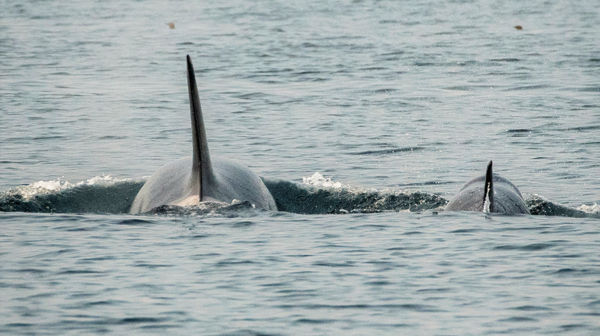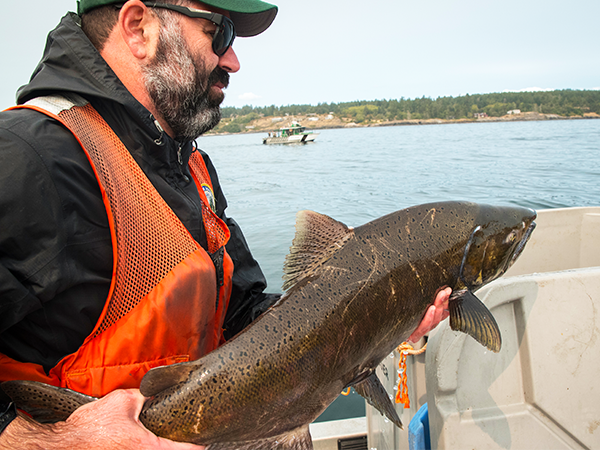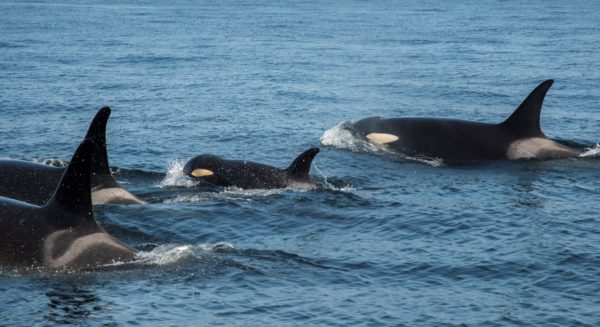Will 2019 bring the lifeline that Canada’s Endangered killer whales need?

This past year brought extreme lows for southern resident killer whales. A mere 74 southern residents are left in the Salish Sea where they are fighting for their lives, but we’re optimistic 2019 can be a turning point for this endangered population.
Summer of loss
Tragedy hit the southern residents in June when L92, a 23-year-old male, was presumed dead after not being seen since November 2017. We don’t know why he died so young, but we do know these orcas are facing a number of disturbances from human activities and a shortage of food. With his disappearance, the population fell to just 75. But it didn’t stop there.
In August, J35’s devastating “tour of grief” made headlines when she was spotted carrying her dead newborn – for 17 heart-wrenching days. The depth of her heartbreak was felt around the world and served as a reminder that, like us, whales have a culture of their own and experience the pain of loss.
While this mother was in mourning, another southern resident killer whale was struggling to stay alive.
J50, a three-year-old female, alarmed researchers with her unusually thin profile. Weak and rapidly losing body mass, J50 was slipping away before our eyes. The Canadian and American governments jumped into action — together, they monitored her and administered antibiotics, but unfortunately it was too little, too late. On Sept. 13, the young killer whale was declared missing and presumed dead.
These events were a huge blow to the struggling population that hasn’t experienced a successful birth since 2016. In total, we’ve lost seven adult southern resident killer whales in the last two years – some believed to be from starvation.
Reason for optimism?
This past year, more protections have been put in place and promises for action made for the critically endangered whales — we are optimistic threats to their long-term survival will be reduced. Here’s a look at how we, in league with other conservation groups, got much-needed protections for this population of whales:
- In January we petitioned the federal government to enact an emergency order to give whales immediate protections.
- In May, under pressure from the petition, the government assessed the southern residents and found they face imminent threats to their survival.
- In September we filed a lawsuit against the Minister of Environment and Climate Change and the Minister of Fisheries and Oceans through our lawyers at EcoJustice over their failure to recommend an emergency order.
- In response to our lawsuit, the ministers announced more protections, including a plan to shut down fisheries and to create buffer zones for boats in critical feeding areas.
Once the ministers recommended an emergency order, our lawsuit was rendered moot so we dropped the lawsuit. But our work is not done. We are now turning our attention to the spring when the whales return to Canadian waters to forage for Chinook salmon – another species clinging to survival.
On Dec. 3, the Committee on the Status of Endangered Wildlife in Canada (COSEWIC) announced that 13 of 16 populations of Chinook salmon from Vancouver Island, the Thompson River and Fraser River are at risk of extinction. Unlike other killer whale populations that feast on seals, southern residents depend on Chinook salmon to survive – this fatty fish is their main source of food.
The news of these COSEWIC assessments is devastating but not unexpected. But if the federal government acts quickly to list the fish and implement recovery and rebuilding actions under the Species at Risk Act, and delivers strong protections as promised for orcas, both Chinook and southern residents will have a chance to bounce back.



